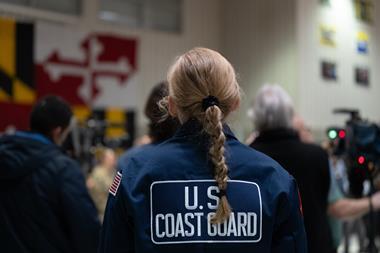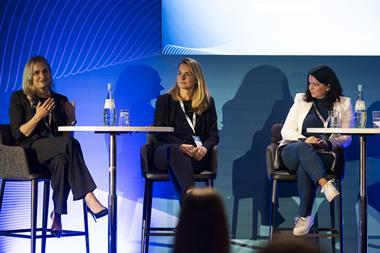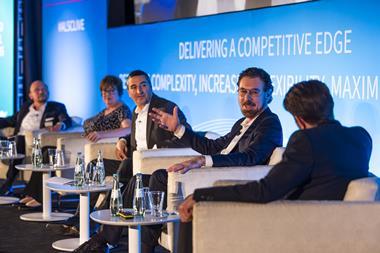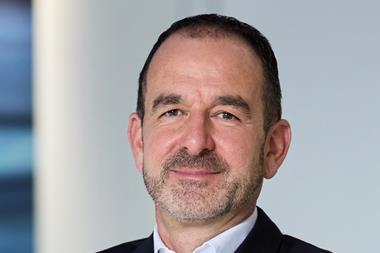Following last year’s winter of discontent, rail providers in North America are putting record amounts of revenue back into meeting demand, while better forecasting and communication with carmakers appear to be improving services.
For the North American finished vehicle rail logistics industry, 2014 was both a bumper year and a bumpy ride. A number of class I railways saw double-digit increases in automotive revenue compared to 2013, driven by exports out of Mexico and another year of strong, rising US sales.
At the same time, many executives may remember 2014 as a year when progress was, almost literally, frozen in time. With northern parts of the continent hit by the record freezing temperatures of the ‘polar vortex’ in the early months of the year, rail services were badly affected. The freeze was followed by a surge in demand for other commodities, including energy and agriculture, which led to a backlog of unmoved finished vehicles several times higher than normal. In a number of cases, vehicles that would have moved by rail were diverted to road. For railways, it was something of a perfect storm.
“Extreme cold requires trains to be shortened for safety reasons, which requires more locomotives and crews to handle the same number of railcars,” explains Linda Brandl, vice-president of automotive at North America’s largest railway for automotive, Union Pacific Railroad.
In the spring of last year, Union Pacific was also affected by flooding on various parts of its system, including its east-west mainline through Iowa, a major UP artery. As a result, UP network velocity, particularly in the Midwest, slowed at a time of increased demand. The situation was similar at many other major railways, including CSX, BNSF and Canadian companies. And as the North American rail industry shares a pool of railcars (wagons), delays and holds in one part of the continent prevent the supply of equipment to areas less affected by weather. So everyone suffered.
The inventory backlogs have long been cleared, however the effects can still be felt in parts of the network that have struggled to recover velocity. According to Michael Beyer, group manger for vehicle logistics at Mazda North American Operations, average velocity across the US remains two days slower than it was before the disruptions last year. In its most recent report, the Association of American Railroads (AAR) predicts that 2015 will be another busy one, with network capacity again one of the major issues.
When cold weather and snow returned this past winter to parts of the north-east and Canada, many anticipated the worst. On top of that, a prolonged labour dispute on the west coast jammed up container ports, with backlogs expected to affect intermodal and rail services. There were also strike threats at both Canadian railways within a week or so of each other in February.

Happily, the outcomes have been better than the predictions so far, including resolution of the Canadian strikes. Dennis Manns, vice-president of logistics and sales planning at American Honda, also says that so far this winter the company’s operations have been far less affected by weather than last year, and have enjoyed a better availability of railcar supply. “Over the past several months, railroads have done a much better job of managing railcar supply, labour supply and power,” he says. “It’s very important to an OEM to have these three areas supported by the railroad in moving our products.”
Big spenders, investing in growth
While the rail industry may partly be enjoying relief from less perilous weather and fewer surges in commodities than last year, executives at rail providers are quick to submit their healthy spending and investment plans.

The company’s automotive network already directly services five assembly plants, eight vehicle ports, and owns or has access to more than 40 vehicle distribution centres. “In addition to our railcar investment, we also have a number of facility upgrades and expansions that will increase capacity, security and safety,” she says.
Dave Fleenor, assistant vice-president for automotive marketing for BNSF Railway, said that the company made a record capital investment of $5.5 billion last year to improve its network and expand capacity. “BNSF continues to grow our capacity by making significant capital investments and expanding key automotive facilities,” says Fleenor. “We are investing in the future of our automotive business by adding nearly 4,000 autoracks from 2013 to 2015.”
BNSF has also created a new automotive switching facility in Kansas City, along with investing in numerous other facility upgrades, which have helped it reduce cycle times and improve efficiency.
Mexico’s Ferromex, owned by Grupo Mexico, which also controls Ferrosur and other logistics companies in Mexico, recently increased its multilevel fleet for moving vehicles by 950 wagons, a growth of almost 60%, according to Alberto Sanchez, assistant vice-president of automotive at the railway.
According to a spokesperson at CSX, which handles almost 4m vehicles every year, the company is investing in the heavily trafficked northern tier of the US, where there is a lot of automotive movement. CSX is also taking delivery of 200 new locomotives in 2015, and expects to return another 150 to service through a heavy rebuild programme. Infrastructure improvements include double tracking along the company’s River Line between Albany, New York and New Jersey. It is also improving the interchange with BNSF at Smithboro, Illinois to alleviate congestion through Chicago.

Railways have responded directly to concerns over weather and a return of the ‘polar vortex’ with new processes as well. “To help mitigate the impact of winter weather events, Union Pacific has developed ‘winter weather command centres’ located on each service unit in our northern region,” says Brandl. “The command centres will be staffed throughout the winter to make ground-level decisions on such things as train crew deployment, maintenance coordination and contractor management.”
Brandl adds that the company keeps surge resources available, including crews, locomotives, and multilevel railcar equipment even beyond Union Pacific’s recommended contribution to the national pool, so as to counteract interruptions from weather or fluctuations in vehicle production and sales. Careful planning is typically required to catch up when resources are tight and demand is high, as it was in 2014.
Answering the capacity question
While these and other measures are expected to help, many executives remain concerned about how the rail network would respond to another significant disruption, or to continuing shifts in production to the southern US and Mexico.

John Felitto, chief executive officer at WWL Vehicle Services Americas, reiterates concerns about railcar supply. WWL handles rail services for OEMs like Nissan, and operates at vehicle processing yards served by rail. He says that the availability of railcar supply during peak periods is a challenge to the company’s operations, along with weather-related delays on rail, and the absence of adequate resources.
[sam_ad id=6 codes='true']
“While these are being addressed, the railroads still fall short of meeting peak demand,” he says.
Railway executives admit there are capacity bottlenecks that are more than just the side effects of bad weather, but are symptoms of the dynamism of the automotive industry and the need for the rail sector to be more flexible, but also for OEMs to improve their forecasting.
Such flexibility is not easy given that railways have to accommodate nearly every agricultural, industrial, wholesale, retail and resource-based sector of the economy. While most businesses experience sudden demand shifts, automotive can change significantly quicker than most others.
Railways plan their capital expenditure over several years, and the amounts rival those invested in plants and research by carmakers. Union Pacific plans to build on the $31 billion in capital investments it made between 2005-2014, including a record $4.1 billion in 2014, with more than $4.3 billion planned for 2015, says Linda Brandl. Since 2000, more than $800m of its capital spend has been specifically focused on the automotive franchise.
“In 2015, as business volumes warrant, we will continue to invest in the automotive network, enabling us to effectively handle our customer’s future growth,” she says. “Union Pacific is the largest contributor to the national multilevel [railcar] fleet, owning more than 25% of the multilevels in service, well above our recommended fleet allocation.”
[sam_ad id=6 codes='true']BNSF, owned by Warren Buffet’s Berkshire Hathaway, and a major automotive player, is also planning big investment in infrastructure and automotive-specific business. The company will invest $2.9 billion in its core network and related assets, as well as $1.5 billion in expansion and efficiency projects. BNSF also plans to spend about $1.4 billion on locomotives, freight cars and other equipment acquisitions.
“As part of our 2014 capital programme we expanded the capacity at several automotive facilities in our network by adding additional parking and other enhancements to improve efficiency,” says Dave Fleenor. Such expansion last year included automotive facilities in Oregon, California, Illinois, Minnesota, New Mexico and Texas.
Operations are also well underway at BNSF’s new Big Lift facility in Littleton, Colorado. The Denver-area facility has 2,200 parking bays for holding brand-new vehicles, before road hauliers truck them to nearby dealerships. The Big Lift facility can handle about 750 vehicles per day.
“Our customers are far more nimble in their ability to change design and production of their product,” says Dave Fleenor. “What used to take weeks or months, now takes days, or even hours. This is far more quickly than the railroads can add new rail [tracks], or new railcars. As a result, forecasting has taken on a more significant role in our interaction.”
More broadly, Fleenor points to significant changes to automotive supply chains over the last five years, including increases in near-shoring and regional production, which have altered the flows of both loaded and empty railcars. New plants in the southern US and in Mexico have diverted empty equipment away from the Midwest, while the balance of equipment that is needed at ports for imports has changed.

“An imported vehicle used to move from vessel to truck to dealer on the west coast,” he says. “Now those same vehicles move to the west coast via rail [from the US or Mexico]. This has dramatically increased the demand for rail capacity.
“As an industry, we are still working through the impacts of these changes,” Fleenor admits.
Along with shifts in production locations, another major reason for demand fluctuations for railways comes from the type of vehicle the end customer is buying. With gasoline prices low, Americans are returning to bigger vehicles, and many of the new designs don’t fit in the conventional tri-level railcars, creating demand for bi-level equipment.

Like Union Pacific, BNSF has made significant investments in flexible equipment, this time with the ‘Automax’ railcar, which is longer and higher than conventional bi-level or tri-level railcars.
“That car gives us the ability to move the newer taller automobiles, in an efficient, three-deck configuration,” says Fleenor. “The versatility of Automax means that more than 85% of all vehicles can be moved using them.”
Temporary holds of large numbers of finished vehicles at plants or ports can also disrupt the network. Such holds often occur for testing or quality reasons, and are especially prevalent during vehicle launches, of which the North American sector has seen a high number.
At Kansas City Southern, for example, major surges in traffic are caused by plant ramp ups, either from a new plant or from an existing plant that has incurred a quality hold. “This is a condition where the inventory rises at the plant and extra equipment is needed to clear it out,” says a spokesperson. “KCS makes sure those instances of volume surges are handled with utmost importance, and that operational plans are effective.”
As rail providers respond to growth and network changes, considerable focus will remain on Mexico, where production and exports hit record highs last year. By 2020, output is expected to grow by another 50%, to 5m units per year.
With rail accounting for around 80% of the vehicle exports headed to the US or Canada, carmakers and logistics companies continue to watch developments carefully. One of the main demand sources for vehicle rail services is coming from the Celaya area, where Honda’s new plant is located, and there is an ongoing (and much delayed) infrastructure project to build a new rail bypass that avoids the lines crossing in the middle of the city.
Honda is using rail to send exports to the Midwest and Canada, as well as to the port of Veracruz on the east coast, and Lázaro Cárdenas on the Pacific coast.
From Honda’s perspective, the launch has seen ups and downs, but the main issue is about finding the right rhythm. “We’ve faced the normal start up issues that any OEMs have with new plants,” says Dennis Manns. “You’re trying to get into a distribution rhythm. As our plant becomes more mature, we should see these problems decline. But these are not issues that we didn’t anticipate. And we are seeing some improvements for this operation.”

“Without rail, Mexico would not be able meet the needs of the automotive industry in terms of transport,” Sanchez told those gathered at the recent Automotive Logistics Mexico conference in Mexico City. “One of the main advantages for the automotive sector is how we have evolved to take the share we have. Most automotive plants have direct access to rail.”
Kansas City Southern de Mexico, the second largest railway in Mexico, is also investing heavily in its automotive operations. The company, which is used by carmakers including Nissan, Honda and Mazda to export vehicles out of Mexico, is focusing in particular on improving links to ports. A spokesperson at the railway says the company is investing further in Automax equipment to and from Lázaro Cárdenas. It is also investing in capacity expansion, such as a line of road infrastructure upgrades along its international corridor and the Caltzontzin district, north of Lázaro Cárdenas, as well as new sidings for key crossing and demand points in Texas.
Along with their investments in fleets, infrastructure and service, Manns also recognises that one of the ways that railways can improve capacity comes down to better communication and forecasting on the part of an OEM to its providers.
“The better job we can do in forecasting, the more it helps the railroads better plan equipment supply,” he says. “If we give them good production forecasting information, then in turn railroads can anticipate what our needs will be from an equipment standpoint.”
Manns adds that one of the priorities for improving the working relationship between the OEMs and all of its partners, including the railways, is continued strong communication. “[That way] we can develop countermeasures that will allow us to perform at optimal levels,” he adds.
Dave Fleenor at BNSF agrees, pointing to improvements that have been made through closer dialogue with OEMs during and since the service challenges the company faced in 2014.
“Our customers appreciate our on-going communication and our ability to set realistic expectations,” says Fleenor. “We were able to effectively communicate the actions we were taking to improve our rail network and the record investments we were making to address any current and future challenges and opportunities.”






















